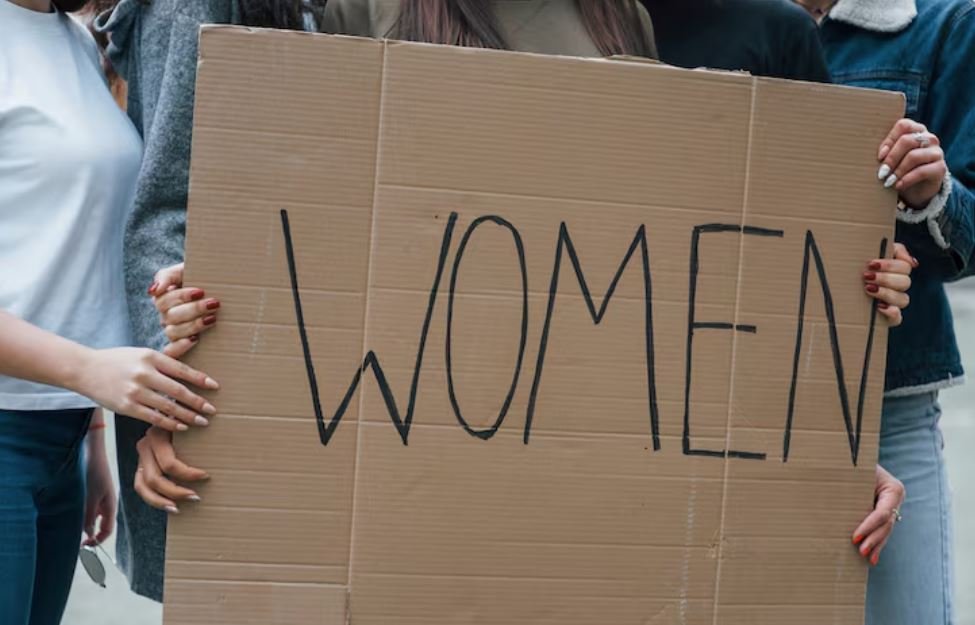
There has been a growing amount of pressure on the notion that feminism is a force for justice, progress, and human dignity. The way that media exaggeration, coordinated online backlash, and cultural anxiety have distorted true feminism is strikingly similar to how previous civil rights movements dealt with such campaigns. A confluence of political polarization, digital echo chambers, and muddled social narratives poses the most obvious threat rather than a single ideological wing.
Feminists have noticed a much louder campaign to undermine their mission in recent years, especially since the historic erosion of reproductive rights in the United States. At the emotional core of identity politics, where feminism is increasingly portrayed as a divisive rather than a unifying ideology, rather than just on the surface of policy. Influencers are manipulating this change by taking advantage of people’s fear and resentment. For example, Andrew Tate portrays feminism as a barrier to male achievement and advocates a brand of masculinity that is more about dominance than confidence. Teens going through vulnerable identity stages find this rhetoric to be very captivating and, regrettably, very successful.
Key Trends and Realities Behind How True Feminism Is Under Attack
| Issue Area | Description |
|---|---|
| Global Backlash | 1 in 4 governments reported policy rollbacks on women’s rights in 2024–2025. |
| Digital Misogyny | Influencers like Andrew Tate fuel anti-feminist ideology among young men online. |
| Misinterpretation of Feminism | Increasing perception that feminism is misandry or a threat to masculinity. |
| Internal Feminist Divides | Identity politics, generational gaps, and lack of unified goals fracture the movement’s momentum. |
| Political Polarization | Feminism faces critique both from conservatives and leftists, each for different ideological reasons. |
| Gender-Based Violence | A woman or girl is still killed every 10 minutes by a family member or partner globally. |
| Economic Inequality | On average, women earn 13% less per hour than men across the EU. |
| Legislative Erosion | Loss of abortion rights in the U.S. inspired regressions in other countries’ legal frameworks. |
| Feminist Models Abroad | India, Tunisia, and Iran offer inclusive, solidarity-based models rooted in resilience. |
| Role of Masculinity | Misplaced fear that feminism aims to destroy traditional masculine roles rather than foster balance. |
These individuals have created what is commonly called the “manosphere“—a digital culture that feeds on reactionary narratives—by exalting hyper-masculine characteristics and disparaging feminist ideals. The outcome? According to surveys, half of British men under the age of 35 now think that feminism has “gone too far.” Although alarming, that data is especially indicative of a deeper disconnect: young men feel threatened by changing societal dynamics that they find difficult to understand, but they are not necessarily antagonistic toward women. According to psychologists, identity threat—a defensive mechanism that causes people to adopt exaggerated traits in order to conceal insecurity—is frequently the root cause of this reaction. Exaggerated masculinity, anti-feminist posturing, and hyper-aggression all turn into performative reactions to inner turmoil.
This performative backlash thrives in periods of economic instability, when male unemployment is high and institutions are perceived as untrustworthy. This discontent has been exploited by anti-gender movements throughout Europe. They portray gender equality, feminism, and LGBTQ+ rights as “ideologies” that have been imposed by the elite. These movements bolster the anxiety that masculinity is being undermined, that traditional values are being undermined, and that modern advancement comes at the expense of male significance. What’s left is a vicious cycle of false information in which social evolution is presented as decay and progress as danger.
But the claim that feminism aims to eradicate masculinity is not only false, it is blatantly false. True feminism aims for balance rather than erasure. It acknowledges that everyone is harmed by strict gender norms. Suicide rates among men who are pressured to be emotionally detached providers are startlingly high. The emotional literacy required for wholesome relationships is frequently lacking in boys who are brought up to repress empathy. Women want men to share their space, opportunities, and voices, not to vanish. However, outrage-driven conversations lose sight of this nuance.
Notably, there are internal upheavals in feminism as well. Although the #MeToo movement has been incredibly successful in raising awareness of sexual abuse, it has also caused division among feminists. Accusations of overreach and a failure to allow due process have caused solidarity to break down. In the meantime, discussions about inclusivity, especially as it relates to trans women, have caused hurtful divisions. Disagreements over representation and leadership almost caused the 2019 Women’s March in the United States to collapse. Although disagreements within movements are inevitable, feminism’s cohesiveness has been severely weakened by its incapacity to sustain sustained solidarity.
Feminist movements in nations like Iran and India, in contrast, have embraced a noticeably more cohesive, family-centered framework. Even under conservative governments, significant reforms in India have been fueled by intersectional alliances between sex workers, LGBTQ+ organizations, and survivors of sexual assault. These activists place more emphasis on group action than on who gets to speak. They see conflicts as chances for development rather than dissolution. Their ability to perform together has been especially creative in fending off authoritarian resistance. Surprisingly, a large number of these movements function without a focal point, purposefully avoiding the personality cults that frequently undermine feminist organizing in the West.
Digital technology has both aided and hindered feminist discourse in the last ten years. Platforms have, on the one hand, given voice to those who are marginalized. Conversely, they have opened up new channels for misinformation, doxxing, and harassment. Online attacks against feminist activists are common, and they can occasionally result in physical violence. Funding for women’s rights groups has significantly declined in spite of this, making them less capable of fending off this assault. Their reach and resilience are further complicated by the digital gender gap, which occurs when fewer women have access to or control over online platforms.
There are, however, rays of hope. According to UN Women’s most recent assessment of the Beijing Declaration, the advantages of defending women’s rights extend well beyond gender boundaries. GDP increases, healthcare gets better, and societies get more educated. For example, achieving greater gender equality in the EU may increase GDP by 6–10% by 2050. These figures make it abundantly evident that gender equity is not only a moral concern but also a business necessity.
Feminism needs to boldly and convincingly re-establish its narrative if it hopes to gain momentum again. This entails asking men to take part as partners rather than as villains or accessories. This entails confronting anxieties rather than ignoring them. It also entails going back to the origins of group action. Fundamentally, feminism is about creating space for each person to live fairly and authentically. It gets more difficult for those who want to destroy society to succeed the more we remind it of this basic fact.
